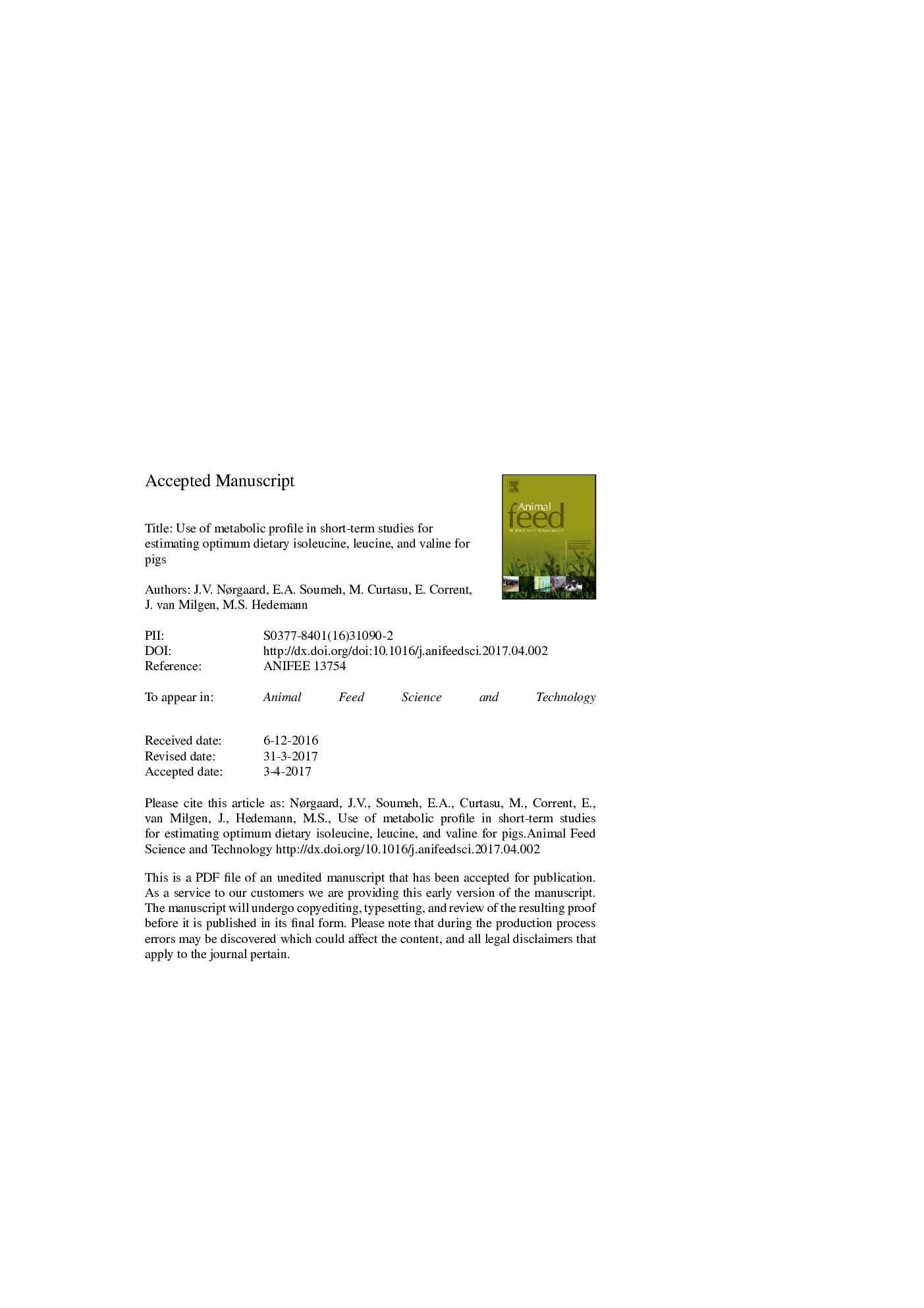| کد مقاله | کد نشریه | سال انتشار | مقاله انگلیسی | نسخه تمام متن |
|---|---|---|---|---|
| 5538919 | 1552358 | 2017 | 26 صفحه PDF | دانلود رایگان |
عنوان انگلیسی مقاله ISI
Use of metabolic profile in short-term studies for estimating optimum dietary isoleucine, leucine, and valine for pigs
ترجمه فارسی عنوان
استفاده از مشخصات متابولیک در مطالعات کوتاه مدت برای برآورد مناسب ایزولوسین، لوسین و والین برای خوک ها
دانلود مقاله + سفارش ترجمه
دانلود مقاله ISI انگلیسی
رایگان برای ایرانیان
کلمات کلیدی
موضوعات مرتبط
علوم زیستی و بیوفناوری
علوم کشاورزی و بیولوژیک
علوم دامی و جانورشناسی
چکیده انگلیسی
Traditional AA dose-response studies utilize many animals for evaluation of growth performance, and it is hypothesized that a new experimental design based on modern analytical techniques can reduce the number of used animals. The objective was to evaluate a short-term approach with a low number of pigs based on plasma metabolites as a method to determine the dietary Ile, Leu, and Val requirements. Three separate 6 Ã 6 Latin square experiments having 6 replicates per treatment were conducted with 6 diets containing increasing concentrations of Ile, Leu, and Val which were fed to 6 pigs (BW 8-9 kg) for 2 days, each without a wash-out period for a period of 12 days. The diets were prepared and used in 3 previous traditional-design dose-response studies and had been stored at â20 °C. Blood samples were collected at the end of each 2-day period, and plasma was analyzed for AA and other metabolites using a metabolomics approach. Out of the 18 analyzed plasma AA, 11, 16, and 3 AA for Ile, Leu, or Val, respectively, showed linear or quadratic responses (P < 0.05) which could be linked to animal growth. The same was found for 4 non-AA metabolites in the Ile, and for 7 non-AA metabolites in the Leu study. 3-Methyl-2-oxovaleric acid, ketohexanoic acid, and α-ketoisovaleric acid were discriminating metabolites for both Ile and Leu. It was possible to fit least squares means of 5, 14, and 2 metabolites in the Ile, Leu, and Val experiments to curvilinear-plateau, broken-line, or quadratic models and thereby estimate an optimum dietary BCAA level. The average optimum BCAA levels across metabolites and models were 0.54 standardized ileal digestible (SID) Ile:Lys, 1.04 SID Leu:Lys, and 0.68 SID Val:Lys which were close to optimums of 0.52, 0.93, and 0.70 found in the previous dose-response studies based on animal growth performance. In conclusion, certain plasma metabolites could be used to estimate Ile, Leu, and Val requirements, and 2 days of adaptation to a new diet was sufficient to reflect relevant biological changes in the blood to different levels of dietary AA in the current study.
ناشر
Database: Elsevier - ScienceDirect (ساینس دایرکت)
Journal: Animal Feed Science and Technology - Volume 228, June 2017, Pages 39-47
Journal: Animal Feed Science and Technology - Volume 228, June 2017, Pages 39-47
نویسندگان
J.V. Nørgaard, E.A. Soumeh, M. Curtasu, E. Corrent, J. van Milgen, M.S. Hedemann,
